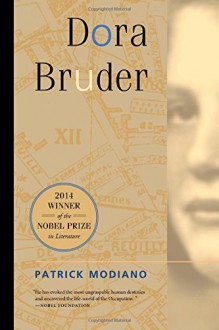In 1988 Patrick Modiano stumbles across an ad in the personal columns of the New Year's Eve 1941 edition of Paris Soir: Missing, a young girl, Dora Bruder, age 15, height 1 m 55, oval-shaped face, gray-brown eyes, gray sports jacket, maroon pullover, navy blue skirt and hat, brown gym shoes.” ...
show more
In 1988 Patrick Modiano stumbles across an ad in the personal columns of the New Year's Eve 1941 edition of Paris Soir: Missing, a young girl, Dora Bruder, age 15, height 1 m 55, oval-shaped face, gray-brown eyes, gray sports jacket, maroon pullover, navy blue skirt and hat, brown gym shoes.” Placed by the parents of Dora, who had run away from her Catholic boarding school, the ad sets Modiano off on a quest to find out everything he can about her and why, at the height of German reprisals, she ran away from the people hiding her. There is only one other official mention of her name: on a list of Jews deported from Paris to Auschwitz in September 1942. What little Modiano discovers about Dora in official records and through remaining family members becomes a meditation on the immense losses of the periodlost people, lost stories, and lost history. Modiano delivers a moving account of the ten-year investigation that took him back to the sights and sounds of Paris under the Nazi Occupation and the paranoia of the Pétain regime. In his efforts to exhume her from the past, Modiano realizes that he must come to terms with the specters of his own troubled adolescence. The result, a montage of creative and historical material, is Modiano's personal rumination on loss, both memoir and memorial.
show less

